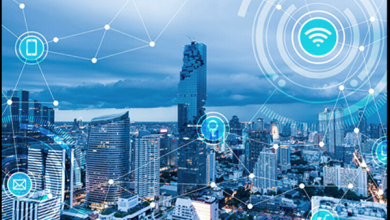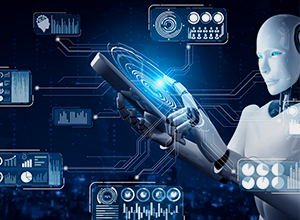Safeguarding Our Digital World The Crucial Connection Between Cybersecurity and Data Privacy
The Crucial Connection Between Cybersecurity and Data Privacy

Introduction
In our increasingly interconnected world, the importance of cybersecurity and data privacy cannot be overstated. The digital age has revolutionized the way we work, communicate, shop, and live. It has brought unparalleled convenience, efficiency, and connectivity, but it has also given rise to new threats and vulnerabilities. As we entrust more of our personal and professional lives to the digital realm, it is imperative to understand the inseparable link between cybersecurity and data privacy, and the measures we must take to protect ourselves in this dynamic landscape.

The Digital Frontier
The digital revolution has opened up vast opportunities for individuals, organizations, and societies. With the proliferation of smartphones, the growth of the Internet of Things (IoT), and the widespread adoption of cloud computing, the volume of data generated and stored has reached unprecedented levels. This exponential increase in data has given rise to cyberattacks and privacy breaches that threaten the very fabric of our digital existence.
Understanding Cybersecurity
Cybersecurity and Data Privacy encompasses a set of practices, technologies, and measures aimed at protecting digital systems, networks, and data from unauthorized access, damage, or theft. It is the frontline defense against a host of threats, from common malware to advanced persistent threats (APTs) orchestrated by nation-states and criminal organizations.
- Threat Landscape: The threat landscape in the digital realm is ever-evolving. Cybercriminals constantly develop new tactics, techniques, and procedures to exploit vulnerabilities. Phishing, ransomware, DDoS attacks, and social engineering are just a few examples of the techniques that cybercriminals employ.
- Protective Measures: To counter these threats, organizations and individuals must adopt a multi-faceted approach to cybersecurity. This includes robust firewalls, intrusion detection systems, encryption, secure access controls, and regular security updates. Additionally, user education and awareness play a vital role in mitigating risks.
- Regulatory Frameworks: Governments worldwide have recognized the importance of cybersecurity and have implemented regulations to ensure organizations take adequate measures to protect data. The European Union’s General Data Protection Regulation (GDPR) and the California Consumer Privacy Act (CCPA) are notable examples.
The Value of Data Privacy
While cybersecurity focuses on safeguarding digital assets from external threats, data privacy centers on ensuring the ethical and lawful handling of personal information. Data privacy is a fundamental human right, and it dictates how data should be collected, processed, stored, and shared.
- Data Collection: Individuals leave a digital footprint with every online interaction, from social media posts to e-commerce transactions. Data privacy rules stipulate that organizations must obtain explicit consent before collecting personal information. This consent should be informed and specific, detailing the purpose for which the data will be used.
- Data Processing: Once collected, data must be processed lawfully, fairly, and transparently. This means that companies cannot use personal information in ways that were not consented to, and they must ensure the accuracy of the data they store.
- Data Storage and Security: Personal data must be securely stored, with safeguards against unauthorized access or breaches. The storage period should be limited, and individuals have the right to request the deletion of their data under certain circumstances.
- Data Sharing: If an organization intends to share personal data with third parties, individuals must be informed, and their consent should be obtained. Transparency in data sharing is key to ensuring data privacy.
The Interplay Between Cybersecurity and Data Privacy
Cybersecurity and data privacy are inextricably linked, as a breach in one directly impacts the other. Consider a scenario where a healthcare organization fails to protect its patient records. A breach would expose sensitive medical data, violating the privacy of thousands of individuals. This breach not only damages the organization’s reputation but may also lead to regulatory penalties and lawsuits. Here are some critical aspects of their interplay:
- Data Breaches: A successful cyberattack often results in data breaches. Hackers can gain unauthorized access to databases, stealing personal and sensitive information. Data breaches have far-reaching consequences, including financial losses, identity theft, and reputational damage.
- Reputation and Trust: Organizations that fail to protect the privacy of their customers and users risk losing trust. When news of a data breach emerges, customers may rethink their loyalty and question the organization’s commitment to their privacy.
- Legal and Regulatory Compliance: Many countries have stringent data protection laws. Compliance with these regulations often entails implementing robust cybersecurity measures to safeguard personal information. Non-compliance can lead to significant fines and legal repercussions.
- Security by Design: Data privacy should be integrated into the design of digital systems from the outset. This means that cybersecurity measures must be proactive rather than reactive. By considering data privacy in the development of systems, organizations can reduce vulnerabilities and potential breaches.
- Data Encryption: Data encryption is a prime example of how cybersecurity and data privacy intersect. It is a protective measure that ensures that even if data is compromised, it remains unreadable without the decryption keys, effectively safeguarding user privacy.
Challenges and Emerging Trends
The evolving digital landscape poses new challenges for both cybersecurity and data privacy.
- Emerging Technologies: Innovations like artificial intelligence (AI) and the Internet of Things (IoT) introduce new dimensions to the threat landscape. AI can be used for both defensive and offensive cybersecurity purposes, while the proliferation of IoT devices increases the attack surface.
- Quantum Computing: The development of quantum computers presents a potential threat to current encryption methods, as they could theoretically break existing encryption standards. Preparing for this quantum threat is a priority in the realm of cybersecurity and data privacy.
- Cross-Border Data Flow: The global nature of the internet often results in cross-border data flow. This raises questions about which jurisdiction’s privacy laws apply, creating challenges for multinational organizations.
- User Empowerment: Users are becoming increasingly aware of their rights concerning data privacy. They demand greater control over their data, pushing organizations to be more transparent and accountable in their data handling practices.
Conclusion
Cybersecurity and data privacy are not optional considerations in our digital age; they are imperative for safeguarding our personal and professional lives. The interplay between these two domains is evident, as cybersecurity provides the means to protect personal data, and data privacy rules ensure ethical and lawful treatment of that data. The dynamic nature of the digital landscape necessitates ongoing efforts to stay ahead of emerging threats and adapt to new technologies.
In a world where data is often referred to as the new oil, we must strive to balance the benefits of innovation with the responsibility to protect the privacy and security of individuals. The path forward requires a multi-faceted approach, involving not only technological solutions but also legal frameworks, ethical considerations, and user empowerment. The preservation of our digital world depends on our ability to navigate the complex terrain of cybersecurity and data privacy with wisdom and vigilance.





